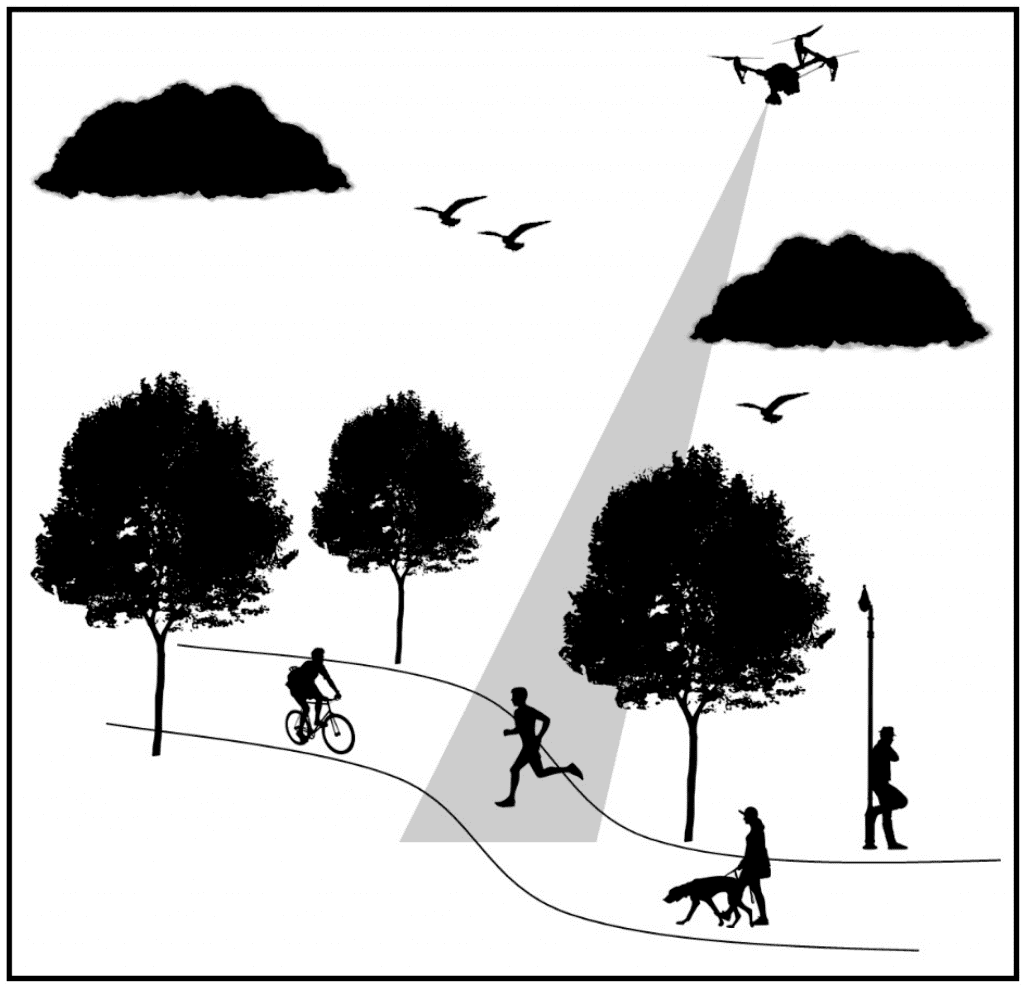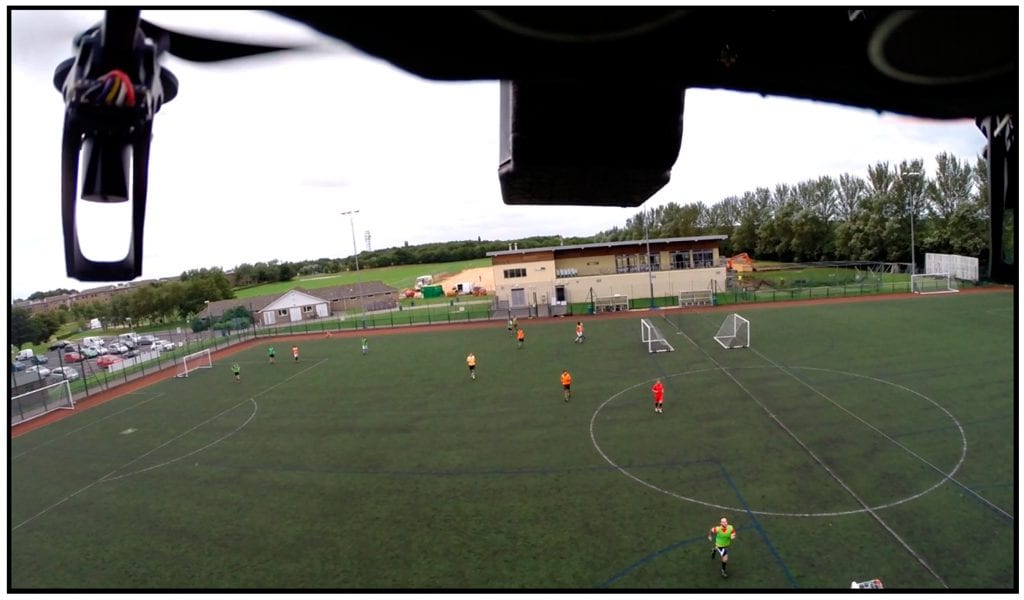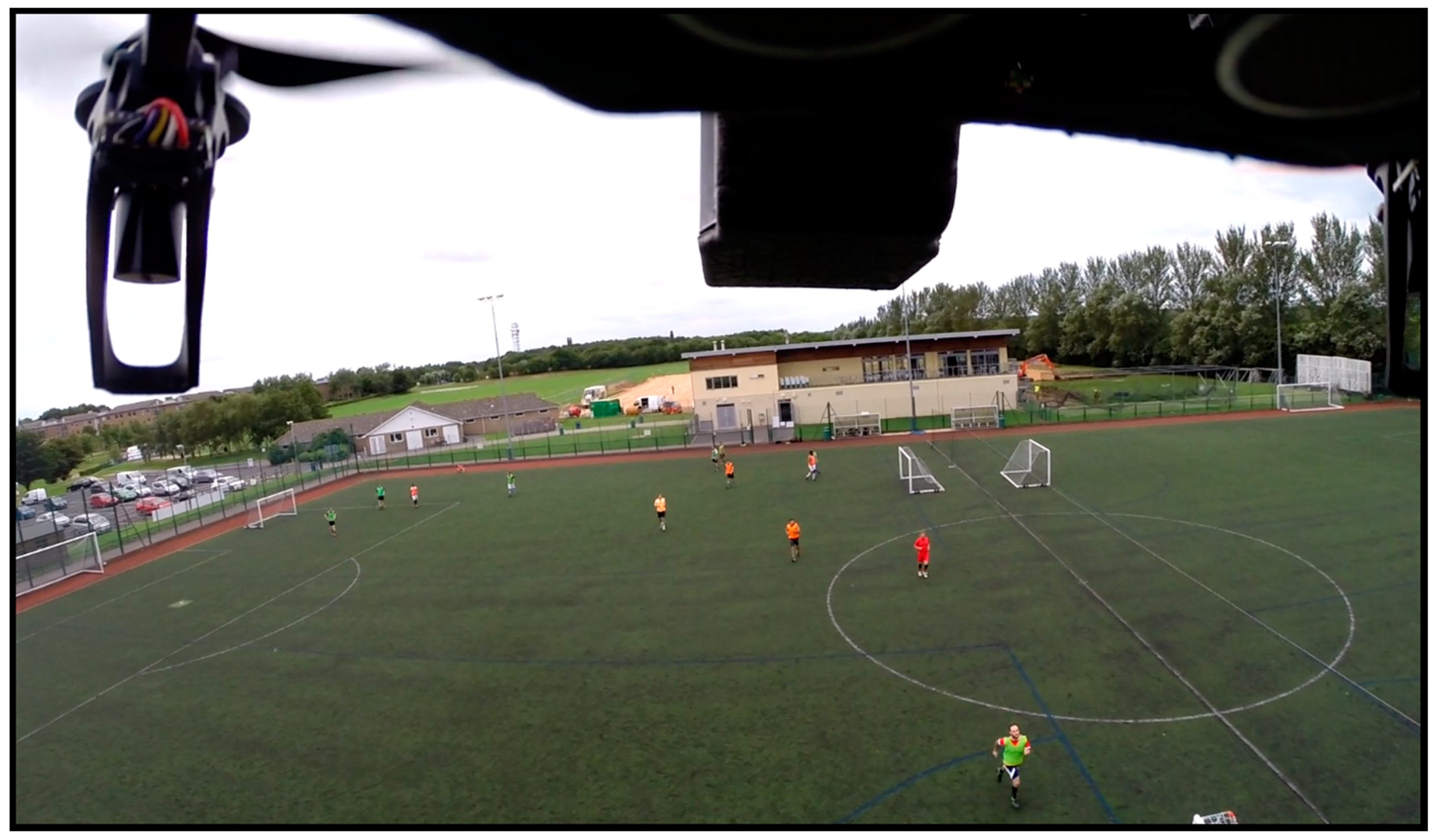News
The Challenges Associated with Identifying People from Drones
Just like calculators and computers surpass human cognitive and computational abilities, UAVs and image processing, integrated with one another, are expected to surpass our ability to identify and detect objects in near future – that is at least the goal of almost all of the research seeking to improve image acquisition applications of drones. One such application of drone-based data acquisition is military or police operations; which implies that drones can provide footage that is of sufficient quality to enable the recognition of strategic targets, criminal suspects, and missing persons.
The problem, however, lies in the fact that such identity judgements are extremely complex and are therefore quite difficult even for humans. Drones and UAVs lag far behind in their ability to identify human subjects discretely.
A research paper published in MDPI’s journal Drones 2018 and titled, “Person Identification from Drones by Humans Insights from Cognitive Psychology“, look at the burning challenge of UAVs’ ability to identify human subjects and in order to do that, the researchers study the responses of people to different stimuli. The authors propose testing people as they try to identify other people from visual input with varying factors or properties such as pixilation or resolution, image size, viewing angle, body composition etc.
The authors of the research propose different means by which a drone could successfully identify human subjects:
Identification of a person with their face
From tests conducted with humans, people were able to identify high resolution images much easily compared to low resolution, pixelated images but an important observation was made; errors arising from low image resolution was partially offset by reducing the size of moderately pixelated face images.

The quality of drone-recorded footage is susceptible to a number of factors, such as the height of the drone itself, as well as ambient conditions. In addition, such footage might be further hindered by obstacles at ground level such as trees and bystanders, as well as the movement of the target themselves.

An aerial view from the perspective of the drone employed by Bindemann et al
![Example stimuli used by Bindemann et al. [47]. The left panel represents an identity match, whereby the high-quality digital photograph shows the same person as depicted in the three images extracted from the drone camera that are shown underneath. Conversely, the right panel depicts an identity mismatch, whereby the high-quality digital photograph depicts a different person to the one shown in the three images below.](http://dronebelow.com/wp-content/uploads/2018/11/drones-02-00032-g004-1024x618.jpg)
Example stimuli used by Bindemann et al. [47]. The left panel represents an identity match, whereby the high-quality digital photograph shows the same person as depicted in the three images extracted from the drone camera that are shown underneath. Conversely, the right panel depicts an identity mismatch, whereby the high-quality digital photograph depicts a different person to the one shown in the three images below.
A very obvious observation was that people were able to identify faces much successfully when they given unlimited time to look at the image that they were supposed to identify.
These observations simply imply that a drone can improve its ability to identify a subject by moving slightly away from them if the live footage being obtained is of low resolution, a single drone would be able to identify any person much efficiently if the drone has already viewed or recorded the person’s face in different orientation.
Identification of a person with their body
To account for observation over long distances as well as provide a parallel cross-check, a drone may be required to identify a person’s body along with their facial features; which is why people’s ability to identify persons with their body is a major consideration.
It was found that judgements were more accurate when people would identify the whole person, than identify the face or the body alone when the target person was furthest away. These results reflect that when attempting to identify someone from far away, people integrate information from both the body and the face to make an identification. Conversely, as the distance between a viewer and target narrows, identity decisions become primarily driven by information from the face.
Identification of a person with their movements
As per the research, people are much successful at identifying pixelated familiar faces from video footage than when these were presented as still images.
While it is observed that people identify familiar persons just as easily with video footage as with static images, unfamiliar faces are identified far more successfully with static images, disregarding the affect of motion.
Identification of a person with aerial footage from drones
A study conducted just last year, titled, Person Identification from Aerial Footage by a Remote-Controlled Drone, involved the use of a drone to record people playing a soccer game in a field. Across several experiments, person identification from this drone-recorded footage was tested and was found to be poor. People were only able to match 48% of the images taken by the drone on the site with the high quality images of the same persons.
Possible Solutions
Face recognition algorithms
One solution that could allow drones to successfully identify people would be the integration of face recognition algorithms. Face recognition programs are already being used in some phones, so they are not something novel. Their usage for drones, however, is very questionable at this point considering the resolution, orientation, lighting and other factors involved.
Super-Recognizers
Another possible solution is to have humans who are really good at recognizing people, teach drones. It has been found that face identification ability varies form person to person; and a person with high success rates of identifying people could continuously provide feedback to a UAV system and improve the system’s own skills.
Citation: Person Identification from Drones by Humans: Insights from Cognitive Psychology, Matthew C. Fysh and Markus Bindemann, Drones 2018, 2(4), 32; https://doi.org/10.3390/drones2040032





















